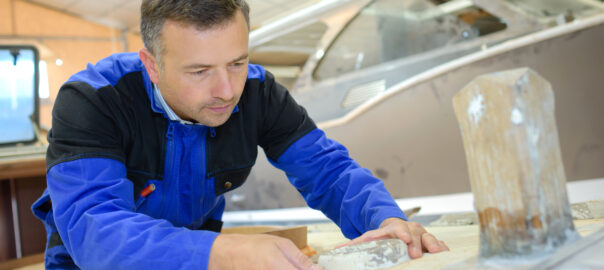The manufacturing industry is constantly evolving, with businesses continually evaluating their production options. One manufacturing method that has gained immense popularity is plastic injection molding. Known for its versatility, efficiency, and high-quality output, plastic injection molding offers numerous advantages, especially when sourced from the USA. In this article, we will explore the advantages of plastic injection molding manufacturing in the USA, covering key benefits such as shorter lead times, cost savings, superior product quality, and regulatory compliance.
Key Benefits of Sourcing Plastic Injection Molding in the USA:
-
Shorter Lead Times
-
Cost Savings
-
Superior Product Quality
-
Intellectual Property Protection
-
Regulatory Compliance
-
Sustainability and Environmental Considerations
1. Shorter Lead Times
One of the significant benefits of plastic injection molding services in the USA is the ability to achieve shorter lead times. Domestic production enables companies to be in closer proximity to their manufacturing facilities, reducing transportation and logistical complexities. This proximity allows for faster communication, reduced turnaround times for tooling and part production, and more efficient supply chain management. As a result, businesses can respond quickly to market demands, shorten their time-to-market, and gain a competitive edge.
For companies looking for high-precision injection molding with tight deadlines, sourcing domestically ensures that they meet their production schedules without the delays often associated with overseas suppliers.
2. Cost Savings
Contrary to common assumptions, plastic injection molding manufacturing in the USA can provide significant cost savings. While labor costs may be higher compared to offshore production, other factors contribute to overall cost optimization. Reduced transportation costs, minimal language and cultural barriers, and shorter lead times lead to improved operational efficiency. Additionally, companies can mitigate quality risks, minimize intellectual property concerns, and maintain better control over the manufacturing process. These factors collectively contribute to cost savings and enhance the long-term profitability of businesses.
Businesses considering low-volume injection molding projects will find that domestic sourcing can be particularly cost-effective, especially when factoring in the reduced logistical costs and the ability to closely monitor production quality.
3. Superior Product Quality
Manufacturing in the USA is synonymous with superior product quality, thanks to stringent quality standards and regulations. Domestic plastic injection molding suppliers adhere to robust quality control measures, ensuring consistent product quality and performance. Local manufacturers often have access to state-of-the-art equipment, advanced technology, and skilled labor, which allows for precise part production and tighter tolerances. Moreover, being closer to the manufacturing process facilitates better communication, collaboration, and the ability to address any quality issues promptly. The result is high-quality products that meet or exceed customer expectations.
For sectors requiring medical device injection molding, the emphasis on quality and compliance is paramount, and U.S.-based manufacturers are well-equipped to meet these demands.
4. Intellectual Property Protection
Intellectual property protection is a crucial consideration for many businesses, especially those involved in custom plastic injection molding. Manufacturing in the USA provides greater assurance of protecting proprietary designs, molds, and trade secrets. Domestic production offers legal safeguards, including patents, trademarks, and copyright protections, which mitigate the risk of intellectual property theft, unauthorized replication, or counterfeiting. Companies can confidently invest in research and development, knowing that their innovative designs and product ideas are well-protected within the jurisdiction of U.S. intellectual property laws.
5. Regulatory Compliance
The USA has stringent regulatory standards governing various industries, including automotive, aerospace, medical, and consumer goods. Plastic injection molding in the USA ensures compliance with these regulations, ranging from safety and environmental standards to material certifications. Domestic plastic injection molding manufacturers have in-depth knowledge and experience in meeting regulatory requirements, ensuring that products adhere to industry-specific standards. This compliance not only enhances product safety and reliability but also instills trust and confidence in customers, strengthening business relationships.
For companies in the medical sector, working with a USA-based plastic injection molder ensures adherence to FDA regulations and other critical compliance standards.
6. Sustainability and Environmental Considerations
Sustainability and environmental responsibility are increasingly significant factors in manufacturing decisions. By choosing plastic injection molding services in the USA, companies can promote sustainable practices. Domestic manufacturers often adhere to environmentally friendly processes, including material recycling, waste reduction, and energy-efficient operations. Additionally, localized production reduces carbon emissions associated with long-distance shipping. This commitment to sustainability aligns with evolving consumer preferences and regulatory initiatives, positioning businesses as environmentally responsible entities.
Conclusion
Plastic injection molding manufacturing in the USA offers a range of benefits for businesses seeking efficient, high-quality, and reliable production processes. From shorter lead times and cost savings to superior product quality, intellectual property protection, regulatory compliance, and sustainability considerations, domestic manufacturing provides a competitive advantage. By leveraging the expertise, infrastructure, and regulatory framework available in the USA, companies can optimize their manufacturing operations.
Whether you are looking for custom plastic parts manufacturing or specialized medical device injection molding, sourcing from a USA-based plastic injection molder can help you achieve your production goals while ensuring the highest standards of quality and compliance.







